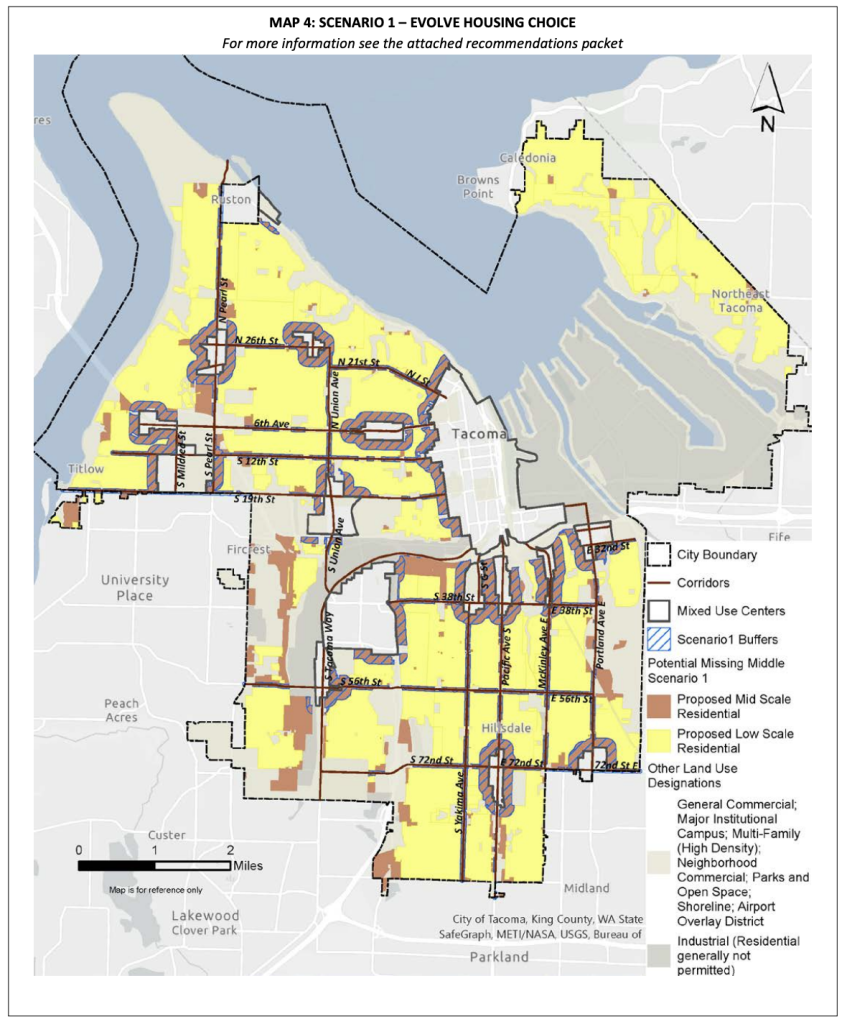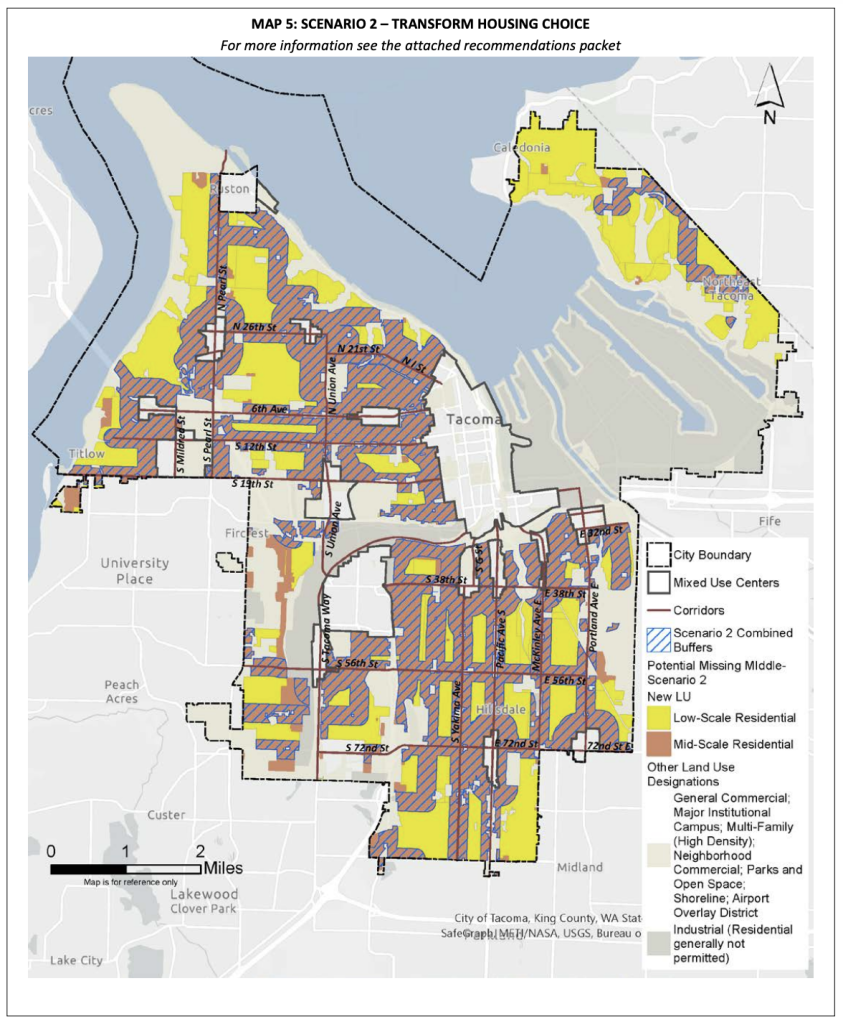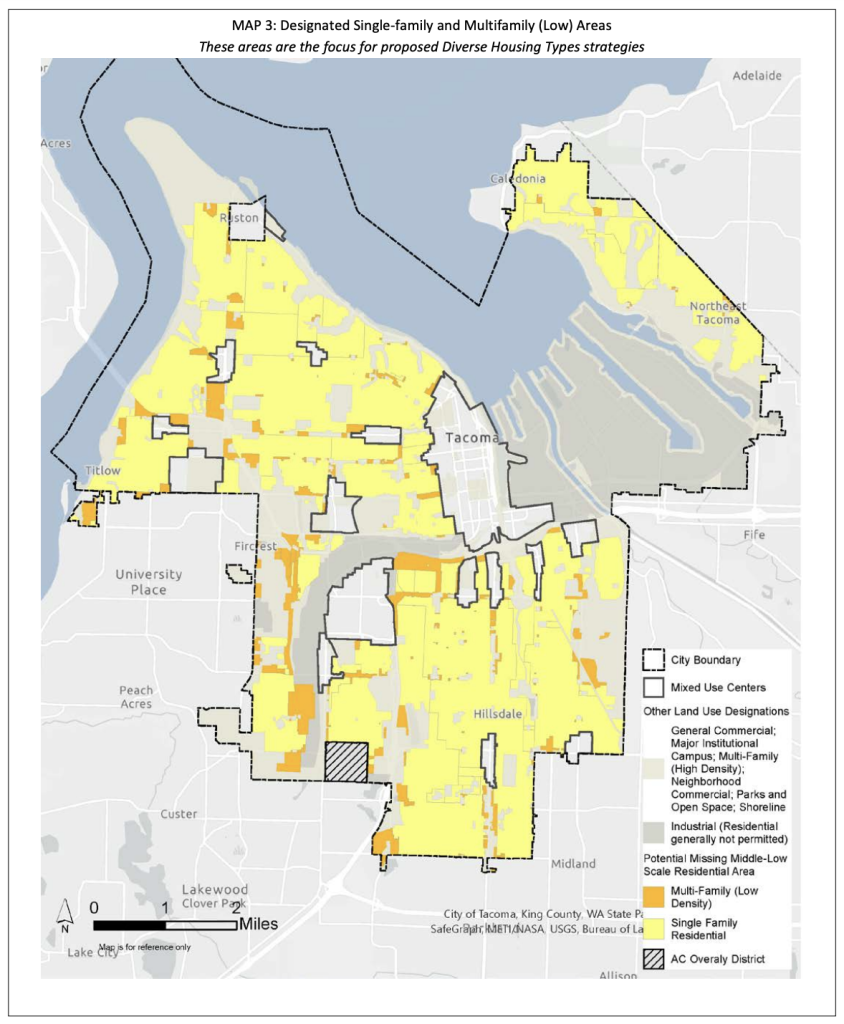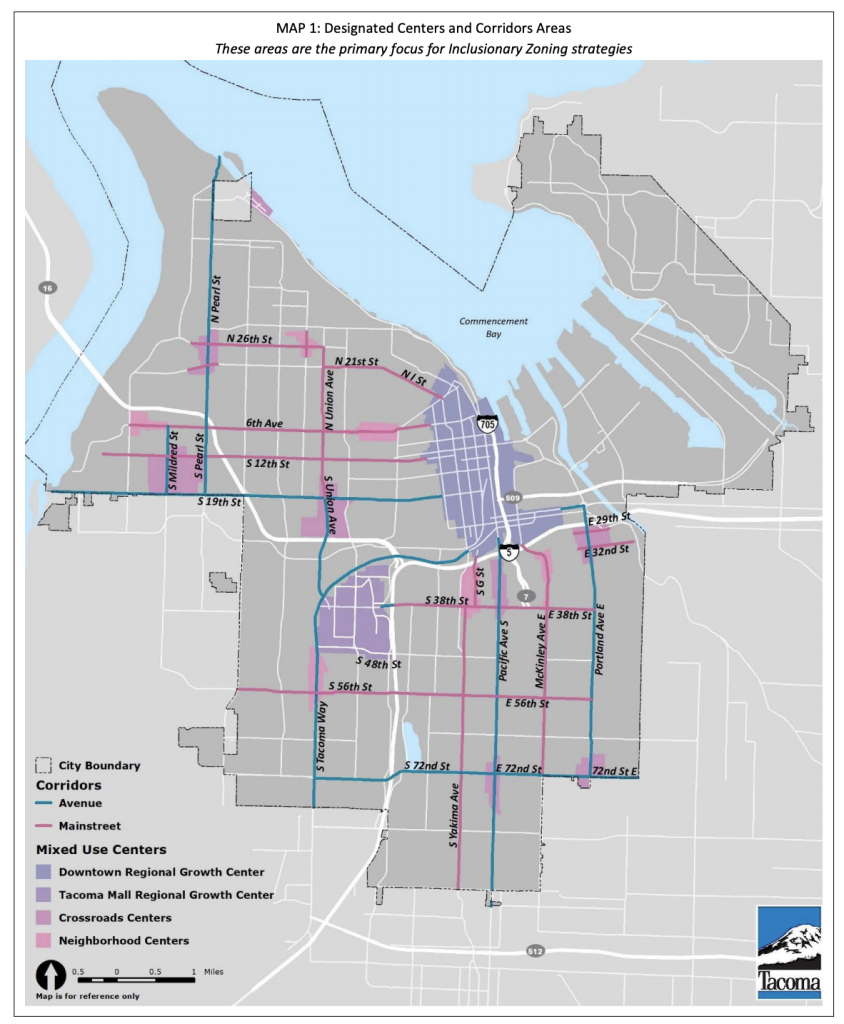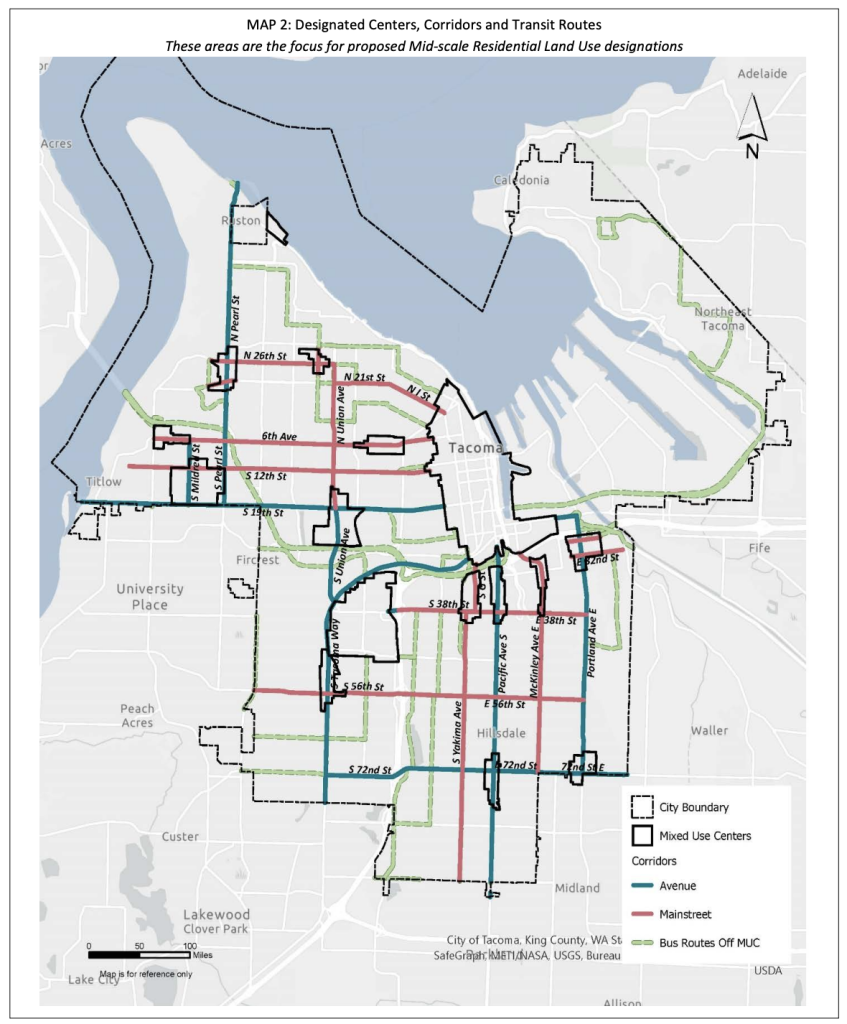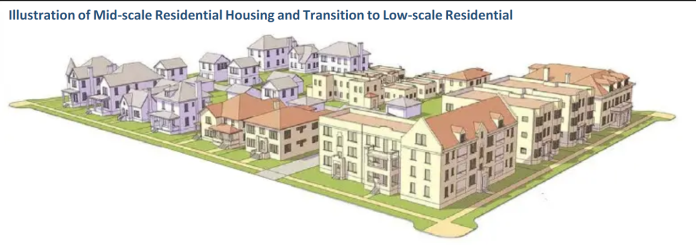
Tacoma has embarked on a sweeping plan to reform residential zoning in the city. The Home in Tacoma project could transform single-family and multifamily zones by allowing more Missing Middle Housing. The plan envisions the usual suspects of accessory dwelling units, duplexes, triplexes, quadplexes, and townhouses as well as small lot housing, cottage housing, tiny houses, and small apartments. The zoning changes would affect about half of the city’s land area–some 15,500 acres in total. The city estimates that single-family zoning accounts for 90% of that land, with multifamily relegated to the other 10%.
Zoning change options under consideration
The Home in Tacoma project is still in the early stages of policy development with the city seeking feedback on two broad alternatives. Both alternatives would rezone single-family and multifamily areas to “Low Scale Residential” and “Mid Scale Residential” areas, but the extent of the latter is the primary difference. The “Evolve Housing Choice” alternative would implement more limited designation of Mid Scale Residential areas while the remaining single-family areas would go to Low Scale Residential. Conversely, the “Transform Housing Choice” alternative would implement a much wider designation of Mid Scale Residential areas with the remaining single-family areas going to Low Scale Residential.
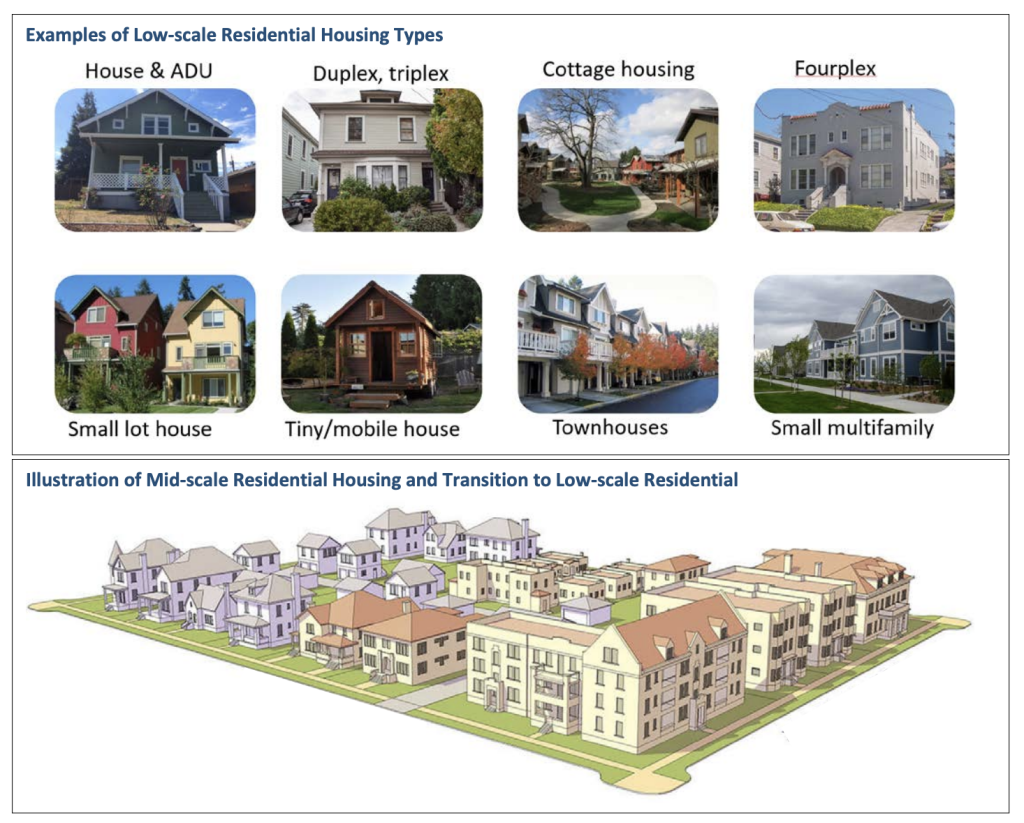
Much of the Mid Scale Residential areas would be conversion of existing single-family zones that are near multifamily and commercial zones. So the Mid Scale Residential changes are not just more flexibility for existing multifamily zones.
The slider below shows the alternative rezoning approaches as well as existing single-family and multifamily zones and the strategy for designating Mid Scale Residential areas and implementing inclusionary zoning programs. Generally speaking, Mid Scale Residential areas would be designated on primary streets and major bus routes. Inclusionary zoning strategies would be more limited to existing designated centers and primary streets.
Under the two alternatives, the amount of Low and Mid Scale Residential significantly differ. The Evolve Housing Choice alternative would result in 75% Low Scale Residential and 25% Mid Scale Residential. Conversely, the Transform Housing Choice alternative would net 40% Low Scale Residential and 60% Mid Scale Residential, tipping the scales toward a decidedly denser city going forward.
In term of permitted uses, the zoning designations break out as follows:
- Low Scale Residential would allow single-family homes, duplexes, triplexes, townhouses, cottage housing, and shared housing, and in some cases quadplexes, small apartments, and tiny homes.
- Mid Scale Residential would allow all of the uses of Low Scale Residential plus mid-scale multifamily uses, live-work units, and some retail and office uses.
New development standards and affordable housing programs
Development standards between the zones would have common requirements like street trees, requiring alley access for parking, pedestrian orientation to the street and sidewalk, and specific design standards by housing type. Where standards differ, however, are in building bulk, parking, and yard space. Low Scale Residential would require one parking space per unit (down from two spaces per unit), maintain a certain level of yard and open space on lots, and keep building bulk (i.e, height, width, and depth) similar to the existing development pattern of homes. Mid Scale Residential would allow for smaller yards and open space on lot, provide for larger buildings with more bulk and lot coverage, and require no more than one parking space per unit (in some cases, the parking ratio may be less and may be waived entirely for deeply affordable housing and certain uses like assisted living housing).
Some additional changes to development standards may include:
- Reducing minimum lot sizes in Low Scale Residential to 2,500 square feet;
- Reducing minimum lot widths in Low Scale Residential to 25 feet;
- Reducing setbacks in Low Scale Residential and Mid Scale Residential; and
- Requiring transition standards in Mid Scale Residential when abutting Low Scale Residential.
Tacoma also wants to promote more equitable affordable housing throughout the city. The Home In Tacoma project is looking at several ways to achieve this through policy changes, including inclusionary zoning. As shown in the slider above, there is a map depicting the corridors and centers where inclusionary zoning strategies could be focused. Affordable housing requirements–generally 10% of units though it could go higher–would kick in with density bonuses.
Developers setting aside affordable housing units would need to make them available to households making 80% or less of the area median income if not using the Multifamily Property Tax Exemption or 50% or less of the area median income if using the Multifamily Property Tax Exemption. The city is also considering a fee-in-lieu option similar to Seattle’s Mandatory Housing Affordability program rather than a developer always constructing affordable housing units as part of a project. Along with this, the city’s Multifamily Property Tax Exemption program would be expanded significantly to cover more areas.
Public feedback
Tacoma has an interactive mapping tool for providing comments. Users can drop pins and make comments on specific zoning proposals while viewing the actual zoning alternatives by toggling layers. Public comment on the proposals will be open through April 9th and a public hearing will occur on April 7th at 5:30PM via Zoom.
Stephen is a professional urban planner in Puget Sound with a passion for sustainable, livable, and diverse cities. He is especially interested in how policies, regulations, and programs can promote positive outcomes for communities. With stints in great cities like Bellingham and Cork, Stephen currently lives in Seattle. He primarily covers land use and transportation issues and has been with The Urbanist since 2014.


